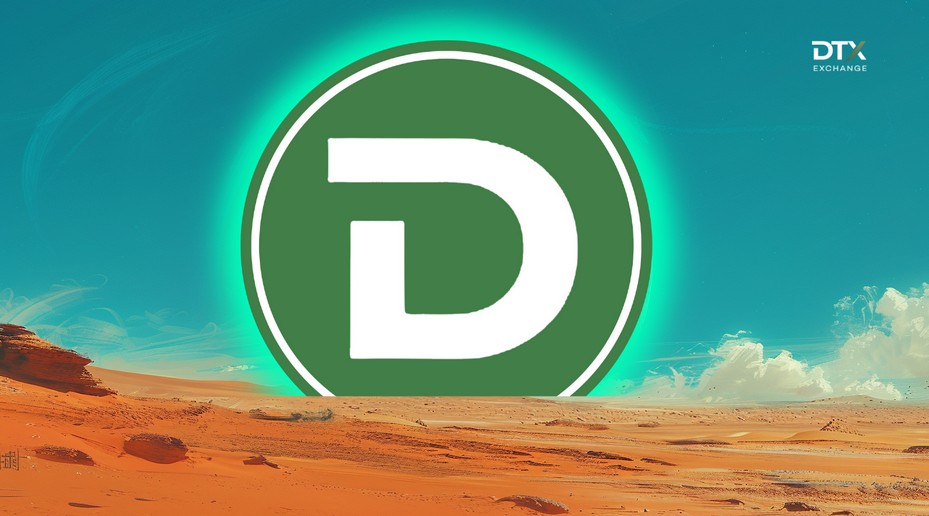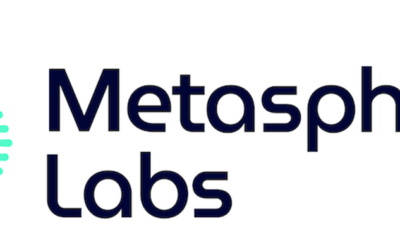DeFi
The DeFi ecosystem is just moving water in a bathtub

Key points to remember
- Cardano prioritizes long-term value and reliability over rapid user acquisition in DeFi.
- Hoskinson believes that future adoption of blockchain will be driven by governments and large enterprises.
Share this article
The decentralized finance (DeFi) ecosystem is an ever-changing landscape, with the introduction of application-specific blockchains (appchains), layer-2 (L2) blockchains, new virtual machines, and more. In this scenario, users are wondering how blockchains like Cardano can compete with these optimized infrastructures.
Charles Hoskinson, CEO of Input Output Global, said during his participation in Blockchain Rio that Cardano is ensuring that everything that has been built so far preserves and protects the value of the blockchain. To achieve this goal, it is more important to make calculated moves rather than just the classic “move fast, break things.”
“There’s no better example than Bitcoin, which by definition is the worst performing of all cryptocurrencies. There aren’t even smart contracts on Bitcoin right now, right? You can’t issue assets on it. Yet it’s worth over a trillion dollars. Why? Because at the heart of it all, the value proposition of Bitcoin is an unwavering commitment to never violate the principles on which Bitcoin was founded and which have value in the marketplace,” Hoskinson told Crypto Briefing.
He added that in competitive environments, like crypto, teams embrace what they know are mistakes to try to move quickly and capture market share. However, protocols spend the next 10 to 15 years trying to correct these fundamental mistakes.
“JavaScript is the best example of that kind of programming language. It was created in 54 days. We spent two decades fixing that really, really bad language. That’s why we saw the rise of Ruby and TypeScript and all these other things, because JavaScript wasn’t fit for purpose. So that’s what Solana and these other things do: They focus on adoption, user acquisition, speed, and transaction costs. They don’t particularly care if the network goes down. They don’t particularly care if they have to reverse or start over. It’s a mad dash for user acquisition.”
While this works for retail holders looking for short-term gains, it doesn’t last in the long term because “protocols are not businesses,” Hoskinson said. Unlike companies that achieve dominance and can “own people’s protocols,” the same can’t happen in the cryptocurrency space.
“Can you imagine the success of Wi-Fi if it broke down all the time and never worked? Competing protocols would destroy it.” Hoskinson went on to point out that previous platforms and devices, such as Nokia mobile phones, MySpace and Yahoo, had up to a billion users before disappearing or losing their user base significantly.
So Hoskinson isn’t thinking about how to keep up with the competition, but how to preserve what people who trust Cardano signed up for and how to add capabilities without going beyond those fundamentals.
“Roll-ups are a great example of that. With extended UTXO, Cardano’s accounting model, and what we’re doing with Plutus V3, not only can we have them, but we can have best-in-class roll-ups because of the way the system works. It’s much harder to implement them on Ethereum or other things. So while they were first to market with that capability, we’re the best to market with that capability. It’s the same with Hydra. It delivers on the promise of everything that Lightning wanted to do and Plasma wanted to do. Yes, they had them years ago. Now we have them. And over time, it’s going to become best-in-class in terms of technology.”
The Input Output Global CEO then compares Cardano to Apple, saying that Apple has stuck to its winning strategy in its various forays, such as its recent foray into large language models for artificial intelligence. Despite short-term competitive issues due to sticking to its strategy, Apple will become “very strong” in its new ventures over time.
“And you know, another thing I think is unfair is that people have unrealistic expectations for growth. They wonder how Cardano is going to catch up. And that’s like our TVL [total value locked] “The growth is 300% in a year. And people say, ‘Yeah, but it’s not 1,000%. What’s going on?’ It’s like asking whether 300% growth per year is unprecedented compared to what we’ve been saying.”
Reliability and compliance
Hoskinson believes that the next billion users to adopt blockchain technology will come from adoption by governments and large companies such as those on the Fortune 500 list.
“Are the government or Fortune 500 companies really going to care that you spent a billion dollars on marketing and you got all these users? No, they’re going to ask fundamental questions, like control, governance, availability, reliability, and security, because at the end of the day, if they make mistakes, they lose their jobs and they don’t get paid for adopting system A or B.”
So, blockchain adoption is a “long-term game” that Cardano aims to play now, by developing an infrastructure where entities can build without worrying about endangering their current users.
Additionally, when it comes to competitiveness, Hoskinson believes people are relying too much on current applications instead of focusing on what will be useful in 2030. “If you make all these decisions correctly, if your competitors don’t, you’re the only option or the best option. So where does the puck go? How do you get regulated companies into the cryptocurrency space?”
He also highlights the need for proper tools to track blockchain development when it comes to offering products, criticizing the lack of solutions to keep the blockchain ecosystem decentralized.
“The plans are to create real assets, tokenized real estate, this, that, and that. But how do you make that work on a blockchain system? Oh, well, it’ll be on the blockchain, but all the private, personally identifiable information will be owned by a centralized company. OK, so doesn’t that make it a centralized asset? It’s not really a block. You’re going about it the wrong way. So my point is, you have to have a basket of solutions for where this is going to go, because everything else is commoditized.”
Additionally, features such as high throughput are not seen by Hoskinson as differentiators, since every blockchain will eventually be fast, adding that a differentiator would be not being sued for deploying an application without a compliance regime.
“Can Solana deliver this right now? No. Neither can Polygon, Ethereum, or Bitcoin. They haven’t even thought about it because they’re fighting for their DeFi degenerates to move water from one side of the bathtub to the other. We’re not adding water to the bathtub. We’re just moving it from one side to the other, and they’re claiming that’s a huge growth success,” Hoskinson concluded.
In June 2024, Cardano prepared for its Voltaire upgrade, signaling a significant advancement in its blockchain governance as it entered the final phase of its decentralization roadmap.
Earlier in June 2024, Charles Hoskinson expressed his belief that Cardano was undervalued, citing its leadership and upcoming improvements like the Chang Hard Fork and Hydra as catalysts for growth.
In April 2024, Paul Frambot of Morpho Labs suggested that widespread adoption of DeFi would advance through collaborations with fintech companies and centralized exchanges, leveraging new infrastructure like Coinbase.
Back in March, a report from Exponential.fi showed that the DeFi ecosystem was maturing, with a trend toward lower-risk protocols due to Ethereum’s shift to a proof-of-stake model.
In January 2024, Aquarius Loan ushered in a new era for DeFi with its cross-chain lending platform that aims to reduce liquidity fragmentation and empower users through its $ARS token governance model.
Share this article
DeFi
Cryptocurrency and defi firms lost $266 million to hackers in July

In July 2024, the cryptocurrency industry suffered a series of devastating attacks, resulting in losses amounting to approximately $266 million.
Blockchain Research Firm Peck Shield revealed in an X post On August 1, attacks on decentralized protocols in July reached $266 million, a 51% increase from $176 million reported in June.
The most significant breach last month involved WazirX, one of India’s largest cryptocurrency exchanges, which lost $230 million in what appears to be a highly sophisticated attack by North Korean hackers. The attack was a major blow to the stock market, leading to a break in withdrawals. Subsequently, WazirX launched a program in order to recover the funds.
Another notable incident involved Compound Finance, a decentralized lending protocol, which suffered a governance attack by a group known as the “Golden Boys,” who passed a proposal who allocated 499,000 COMP tokens – valued at $24 million – to a vault under their control.
The cross-chain liquidity aggregation protocol LI.FI also fell victim On July 16, a hack resulted in losses of $9.73 million. Additionally, Bittensor, a decentralized machine learning network, was one of the first protocols to suffer an exploit last month, loming $8 million on July 3 due to an attack targeting its staking mechanism.
Meanwhile, Rho Markets, a lending protocol, suffered a $7.6 million breach. However, in an interesting twist, the exploiters research to return the stolen funds, claiming the incident was not a hack.
July 31, reports The Terra blockchain protocol was also hacked, resulting in a loss of $6.8 million across multiple cryptocurrencies. As crypto.news reported, the attack exploited a reentrancy vulnerability that had been identified a few months ago.
Dough Finance, a liquidity protocol, lost $1.8 million in Ethereum (ETH) and USD Coin (USDC) to a flash loan attack on July 12. Similarly, Minterest, a lending and borrowing protocol, saw a loss of $1.4 million due to exchange rate manipulation in one of its markets.
Decentralized staking platform MonoSwap also reported a loss of $1.3 million following an attack that allowed the perpetrators to withdraw the liquidity staked on the protocol. Finally, Delta Prime, another decentralized finance platform, suffered a $1 million breach, although $900,000 of the stolen funds was later recovered.
DeFi
Centralized crypto exchanges are slowly losing ground to their DeFi counterparts

Centralized crypto exchanges are slowly losing ground to their DeFi counterparts, according to an in-depth data analysis conducted by Decrypt.
DeFiLlama’s decentralized exchange (DEX) volume data and CoinGecko’s total cryptocurrency trading volume data show that the percentage of cryptocurrency trading volume occurring on DEXs relative to total trading volume has increased from 4.6% in February to over 7% this month. This is an increase in the share of trading volume driven by DEXs of over 52%.
Source: Adrian Zmudzinski
Kunal Goel, a senior research analyst at Messari, told Decrypt that several factors are fueling the growth in DEX market share. He cited “the growth of meme coins and long-tail assets” as one of the reasons, explaining that they tend to list first on DEXs and only appear on centralized exchanges much later.if they last that long.
“The onchain user experience has improved with low fees and high throughput on Solana and Ethereum L2,” he added, highlighting advancements making decentralized finance (DeFi) solutions increasingly easier to use.
DeFiLlama data further shows that over the past 24 hours, DEX volume accounted for 22% of total trading volume. The crypto price aggregator notes that this percentage is meant to represent the dominance of decentralized exchanges over aggregated decentralized exchanges and centralized exchanges.
So far in 2024, DEX volume has seen a slow and steady increase.
CEX and DEX trading volume increased from $133.5 billion in January to $179.5 billion this month, an increase of about 34%. The year-to-date high was recorded in March, when CEX and DEX volumes saw a sharp increase, reaching $4.8 trillion and $266.89 billion, respectively.
Goel noted that at the time, “Bitcoin hit new all-time highs in March and trading activity is generally positively correlated with price and sentiment.” Looking ahead, he expects centralized exchanges to move on-chain and disrupt their own business models before others can. He added that “Base and BNB Chain are the most prominent examples of this.”
TradingView also shows a DeFi market cap dominance chart, in percentage terms. Currently at 3.86%, it fell from 4.47% on January 1 and hit a 2024 high of 4.81% on February 25. Goel noted that this was unexpected since “DEX volumes are a key driver of DEX value, so it’s a bit contradictory.”
Challenge is an umbrella term for a group of financial tools built on a blockchain, including DEXs, exchanges that operate primarily on-chain. The primary goal of DeFi is to allow anyone with internet access to lend, borrow, and bank without relying on intermediaries.
Similarly, the main goal of DEXs is to allow anyone with internet access to trade or even provide liquidity in exchange for a stake. DeFi and DEXs are one of the main areas of focus in decentralized application (dapp) development, which have seen considerable adoption this year.
Edited by Stacy Elliott.
DeFi
Pump.Fun Overtakes Ethereum in Daily Revenue: A New Leader in DeFi

In a remarkable turn of events, Pump.Fun, a memecoin launchpad, has surpassed all other platforms in the decentralized finance (DeFi) sector, achieving the highest gross revenue in the last 24 hours. According to data from DeFiLlama, Pump.Fun amassed $867,429 during this period, surpassing Ethereum’s $844,276. This achievement underscores the growing influence of memecoin infrastructure within DeFi.
Pump.Fun Revenue Milestones
The impressive revenue numbers go beyond daily performance. Pump.Fun is generating $315 million in annualized revenue, averaging $906,160 per day over the past week. This revenue surge is largely due to the recent memecoin frenzy, with Solana-based memecoins being particularly popular among on-chain enthusiasts. The platform’s user-friendly interface allows non-technical users to quickly launch their own tokens, spending as little as $2 without needing to provide any initial liquidity.
How Pump.Fun works
Pump.Fun’s operating model is designed to facilitate the use and rapid launch of tokens. Users can create new tokens in minutes, which are then allowed to trade along a bonding curve until they reach a market cap of approximately $75,000. At this point, the bonding curve is burned on Raydium, establishing a secure liquidity pool. The platform generates revenue through a 1% fee on transactions made on the platform. However, once a token is bonded and burned on Raydium, Pump.Fun stops charging this fee.
Ethereum: Traditional Power
Despite its daily revenues, Ethereum remains a cornerstone of the DeFi ecosystem. It is the blockchain of Ether, the second-largest cryptocurrency with a market cap of $395 billion. Ethereum powers many applications and digital assets, backing over $60 billion worth of smart contracts. Revenue generation on Ethereum is done through transaction fees, called gas, which are paid in ETH for executing transactions and smart contracts.
Comparative analysis of revenue models
While Ethereum’s revenue model relies on gas fees for transactions and smart contract executions, Pump.Fun takes a different approach. By enabling easy and low-cost token launches, Pump.Fun caters to a broad audience, including non-technical users. This inclusiveness, combined with the excitement surrounding memecoins, has led to rapid revenue growth. The 1% transaction fee ensures continued revenue generation until the token transitions to Raydium, creating a sustainable business model.
Memecoin frenzy
The recent rise in popularity of memecoins has been a major contributor to Pump.Fun’s success. Memecoins, particularly those based on Solana, have captivated the DeFi community, generating substantial activity on platforms like Pump.Fun. This trend highlights a shift in DeFi dynamics, where niche platforms catering to specific interests can achieve significant revenue milestones.
Future prospects
Pump.Fun’s recent successes suggest a potential shift in the DeFi landscape. As the platform continues to attract users with its simple token launch process and low-cost entry point, it could solidify its position as a leader in the DeFi space. The memecoin phenomenon shows no signs of slowing down, indicating that platforms like Pump.Fun could continue to see robust growth.
In conclusion, Pump.Fun’s ability to surpass Ethereum in terms of daily revenue underscores the evolving nature of the DeFi space. By providing a user-friendly platform for launching memecoins, Pump.Fun has tapped into a lucrative niche, demonstrating the potential for niche platforms to thrive alongside traditional blockchain giants like Ethereum. This development signals a broader trend toward diversification and innovation within the DeFi ecosystem, with new entrants challenging established players through unique value propositions and targeted services.
DeFi
$10 Billion Venture Firm May Target 10x Opportunities in Ripple (XRP) and This DeFi Token

According to recent reports, one of the largest venture capital firms is looking for new opportunities in the cryptocurrency space as Bitcoin (BTC) attempts to break its all-time high and start a new bull run in the cryptocurrency market. They are balancing risk with low-risk, low-reward and high-risk, high-reward opportunities.
The first investment candidate is a top cryptocurrency, Ripple (XRP); it doesn’t have much growth potential because it’s already a large cap. Another scenario the firm is targeting is DTX ExchangeThe new hybrid exchange is expected to revolutionize the foreign exchange industry. According to analysts, its growth potential is immense and the risk is also very limited due to its low price.
Market is bullish as Trump wants to make US a Bitcoin (BTC) superpower
Over the past 30 days, Bitcoin (BTC) has increased by about 10%, and one of the catalysts for this price increase has been Donald Trump recently speaking out as a crypto pro. Presidential candidate Donald Trump has promised to make the United States the world leader in cryptocurrencies if elected in November. Speaking at the Bitcoin2024 conference in Nashville, Trump compared Bitcoin (BTC) to the steel industry of 100 years ago, highlighting its potential.
Trump’s plans include firing SEC Chairman Gary Gensler and immediately creating a “Presidential Advisory Council on Bitcoin (BTC) and Cryptocurrencies.” He stressed the importance of American leadership in the cryptocurrency space, saying, “I am laying out my plan to ensure that the United States is the cryptocurrency capital of the planet and the Bitcoin (BTC) superpower of the world.”
$600 Million Worth of Ripple (XRP) to Be Released in August
Ripple (XRP), the company behind the XRP Ledger blockchain and its native token Ripple (XRP), unlocks up to 1 billion tokens on the first day of every month. Since 2017, they have used several major escrow wallets, including Ripple (XRP) (24) and Ripple (XRP) (25), to evenly distribute these monthly unlocks.
However, Ripple (XRP) often relocks a large portion of newly issued XRP. For example, on June 1, Ripple (XRP) relocked 800 million XRP but still sold about 300 million XRP, worth $182 million at the time.
While Ripple (XRP) releases up to 1 billion XRP tokens each month, the actual amount released into circulation is typically much lower due to this re-escrow process, as noted in a 2017 XRP Ledger blog post.
DTX Exchange Follows Bitcoin (BTC) Path
The main target of large private equity firms is the DTX exchange (DTX), the reason being a clearly high utility like Bitcoin (BTC). This project has attracted global attention thanks to its exceptional pre-sale performance, offering early buyers a 100% return on investment and raising over $1 million. Projections suggest that this figure will reach $2 million by the end of August 2024.
DTX Exchange offers a revolutionary hybrid trading platform, combining the best features of centralized (CEX) and decentralized (DEX) exchanges. Traders can enjoy a seamless experience with access to over 120,000 asset classes, no KYC verification upon registration and ultra-fast transaction speeds of 0.04 seconds.
These benefits have attracted traders to this new cryptocurrency exchange. Currently, in Phase 2 of its pre-sale, DTX Exchange is listed at $0.04, which is double its starting price of $0.02. Market analysts predict that the upcoming listing of DTX Exchange on the Level 1 CEX in late 2024 could trigger a 100x bullish rally, making DTX Exchange the top cryptocurrency exchange to watch.
Learn more:
Disclaimer: The statements, views and opinions expressed in this article are solely those of the content provider and do not necessarily represent those of Crypto Reporter. Crypto Reporter is not responsible for the reliability, quality and accuracy of the materials contained in this article. This article is provided for educational purposes only. Crypto Reporter is not responsible or liable, directly or indirectly, for any damage or loss caused or alleged to be caused by or in connection with the use of or reliance on any content, goods or services mentioned in this article. Do your research and invest at your own risk.
-

 Videos9 months ago
Videos9 months agoCrypto News: Bitcoin, ETH Price, CPI Print, PYTH, WIF & MORE!!
-

 Videos9 months ago
Videos9 months agoCrypto News: Bitcoin Price, ETF, ETH, WIF, HNT & MORE!!
-

 DeFi9 months ago
DeFi9 months agoMetasphere Labs announces follow-up event regarding
-

 Videos9 months ago
Videos9 months agoSolana price potential?! Check out THIS update if you own SOL!!
-

 Videos8 months ago
Videos8 months agoWho Really CONTROLS THE MARKETS!! Her plans REVEALED!!
-

 DeFi6 months ago
DeFi6 months agoPump.Fun Overtakes Ethereum in Daily Revenue: A New Leader in DeFi
-

 News6 months ago
News6 months agoNew bill pushes Department of Veterans Affairs to examine how blockchain can improve its work
-

 DeFi6 months ago
DeFi6 months agoDegens Can Now Create Memecoins From Tweets
-

 News6 months ago
News6 months agoLawmakers, regulators to study impact of blockchain and cryptocurrency in Alabama • Alabama Reflector
-

 Bitcoin6 months ago
Bitcoin6 months ago1 Top Cryptocurrency That Could Surge Over 4,300%, According to This Wall Street Firm
-

 Ethereum8 months ago
Ethereum8 months agoComment deux frères auraient dérobé 25 millions de dollars lors d’un braquage d’Ethereum de 12 secondes • The Register
-

 Videos8 months ago
Videos8 months agoCryptocurrency News: BTC Rally, ETH, SOL, FTM, USDT Recover & MORE!






